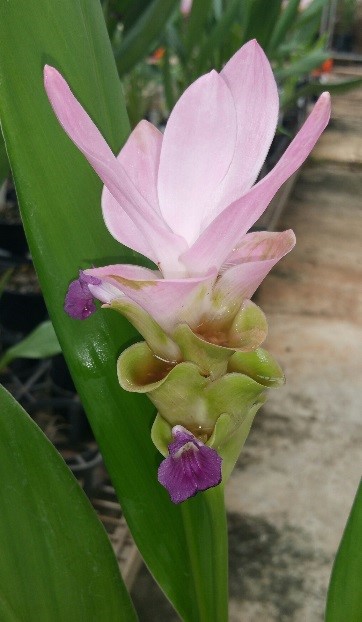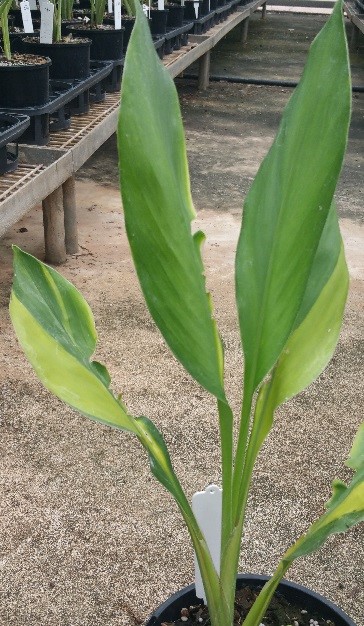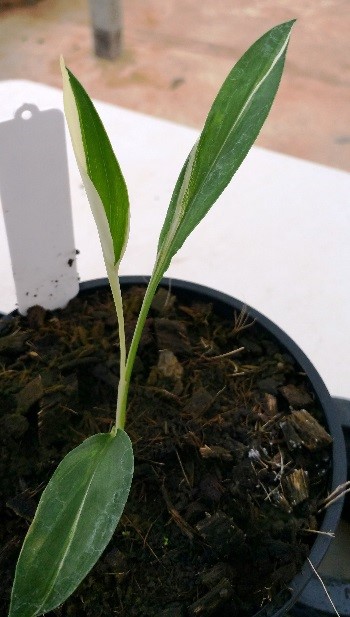Generating new varieties of ornamental Curcumas
Doris Marcsik
From the previous Rural Industries Research and Development Cooperation research project a selection of hybrids derived from the Department’s curcuma germplasm, were identified by the nursery industry with having desirable attributes for production as a potted plant. This has led to strong interest from the nursery industry to further commercialise some of these curcuma hybrids. New varieties is another aspect that the nursery industry is strongly interested in. However, with the current curcuma germplasm this is difficult as most of the hybrids are sterile.
The use of mutagenesis is being investigated by DPIR as a method to generate new sources of genetic variations in creating promising new varieties of Curcumas. A preliminary trial using the mutation technique of gamma irradiation was undertake on three curcuma hybrids.
To determine the effect of gamma irradiation on these curcuma hybrids prepared rhizomes were sent to the Australian Nuclear Science and Technology Organisation (ANSTO) facility to quantify optimum doses of gamma irradiation. Treated rhizomes were potted up and assessed for survival rate (lethal dosage LD50), and examined for variations in plant morphology in response to the irradiation.
The main changes in plant morphology observed were leaf aberrations such as shape and chlorophyll mutations (Fig. 10). Irradiation induced some flower shape and flower colour variations in plants that survived the higher dose levels.
Further work will be conducted on looking at in-vitro mutagenesis using both physical and chemical mutagens. Selected curcuma hybrids are currently being multiplied in tissue culture for this work.
 |
Figure 12. From left to right: Non-treated Curcuma inflorescence; a mutant inflorescence with darker pink-coloured bracts and lighter green basal bracts. Some plant morphological and leaf chlorophyll variations split leaves and strong variation in green colour intensity exhibited in the leaf, and (far right) narrow leaves with white longitudinal bands alternating with green colour.
Give feedback about this page.
Share this page:
URL copied!


